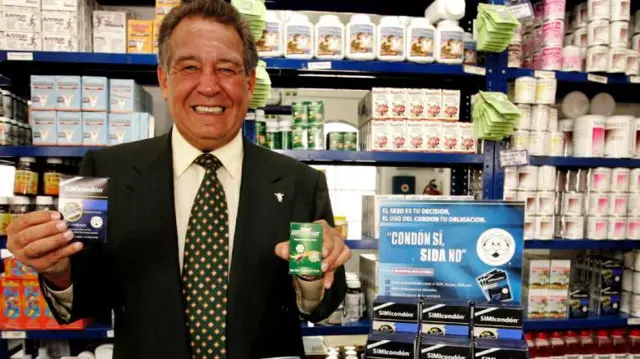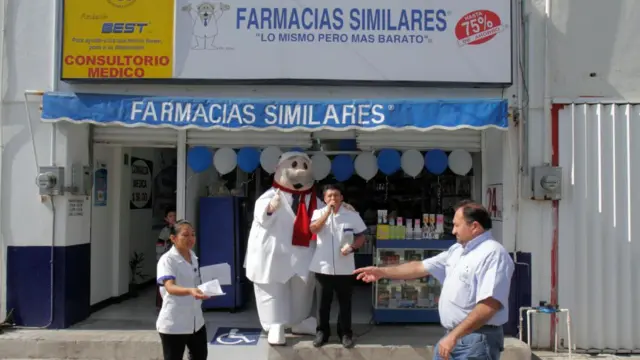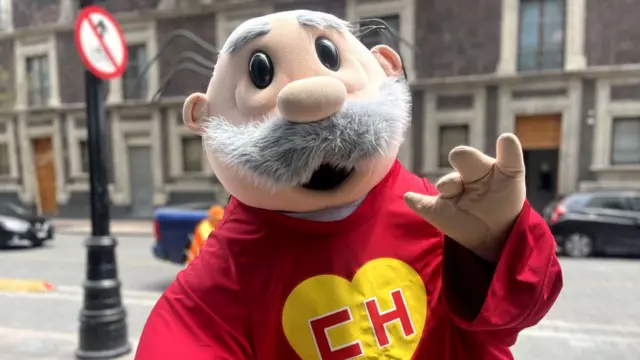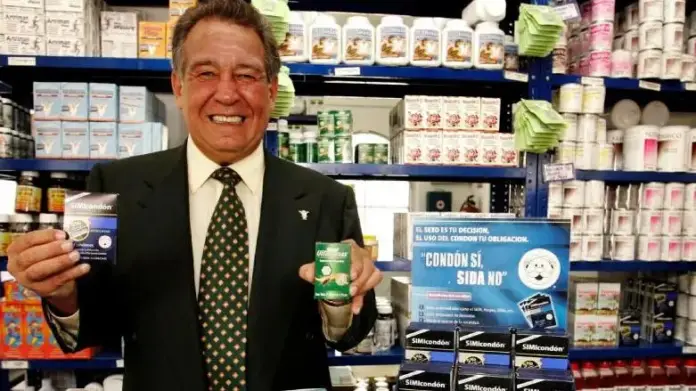
With a bushy, gray mustache, a smile and a good dance step, Doctor Simi is not only the most famous stuffed animal in Mexico: he is, rather, the face of a revolution in the Mexican health system and, probably, in the rest of Latin America.
Although they were born in 1997, Farmacias Similares have experienced a boom during the last five years.
The coronavirus pandemic, the frustrated reforms to the health system and an advertising strategy focused on the doll, among other things, caused the Similares to proliferate until reaching 9,411 pharmacies throughout the country; all with an “adjacent office” that serves a doctor for less than US$3.
Added to this are 505 pharmacies in Chile and another three that are about to open in Colombia.
They have four foundations for social and environmental assistance. They have done 43 reforestation projects. Nearly 1,000 families live in Colonia Simi, a neighborhood sponsored by the company, where the houses are painted with a giant face of the doll. The entire line of Simi stuffed animals is made by people with disabilities.
It is not, then, just any pharmacy. In the Similares, a speaker plays salsa or reggaeton and, outside, the old doctor’s mascot with thick eyebrows dances and cheers and poses for the photo.
The stuffed animal has reached the stage of artists such as Taylor Swift and Harry Styles. The boxer Julio César Chávez, among others, serves as their image. Two months ago they inaugurated an amusement park called Similandia. They have a roller coaster. And they are about to open a museum where one day the remains of the famous owner, Víctor González Torres, will rest.
“We like to win, but above all we like to help,” said the 77-year-old businessman during the inauguration a month ago of Casa Simi, located in a Republican mansion in CDMX.
With a low, halting voice, sitting in a wheelchair, González Torres continued: “I am old, and helping is what makes me feel good. I am addicted to helping, that is what keeps me alive. I am very sick. I love those who have less. I have a lot and I have the obligation to share, because those who have wealth have the moral obligation to help their neighbor.”
A frustrated candidacy for the presidency in 2006 due to voter registration issues, however, turned González Torres into a national figure. Since then, 80% of Mexicans, according to surveys, view him favorably. He has received the blessing of Pope Francis and this year the Guatemalan activist Rigoberta Menchú nominated him for the Nobel Peace Prize for promoting the “integral health of people.”
This, then, goes beyond the pharmaceutical issue: it is a political and cultural phenomenon. But it begins with a strategy to sell medicines with a suggestive premise: “The same, but cheaper.”
The origin of Simi
González Torres inherited from his father Laboratorios Best, a pharmaceutical company that depended on the purchase of medicines from the State. It had a license to produce generics, that is, exact copies of medicines patented by other companies. They are 90% of the medicines in Mexico.
And Mr. Victor, as he is known, decided to sell them “75% cheaper” in a country where the average medicine cost twice as much as in the rest of Latin America.
The innovative strategy was joined by other developments apparently unrelated to the company.
In 2010, Jorge González, Victor’s brother and founder of the Green Ecologist Party, promoted the Simi Law, which allowed, among other things, private companies to supply the demand that the public sector could not meet. A growing demand in the face of an underfunded system full of corruption.
That same year, Congress strengthened the parameters for buying prescription antibiotics in the midst of a swine flu epidemic.
That encouraged the proliferation of offices adjacent to pharmacies, according to Andrés Castañeda, a public health expert at the National Autonomous University of Mexico (UNAM): “Pharmacies said, ‘if we can no longer give antibiotics without a prescription, then let’s have someone who writes the prescription.'”
While some international artists take photos with the Dr. Simi stuffed animal, others tear off its head, as Rubén Albarrán, singer of Café Tacuba, did on stage. A few Mexicans view the model of pharmacies with adjacent offices with enormous skepticism.
Their criticisms can be summarized in four: pharmacies are a business that prioritizes profitability instead of well-being, for that reason they tend to prescribe more than necessary, their philanthropic line is a strategy to sell more and they have created a parallel system disconnected from the public health system that treats the most serious diseases.

A study found that private pharmacies prescribe one more medicine per prescription, on average, than the public sector.
Victor Gonzalez Herrera, the founder’s son, is today president and spokesman for the Group for a Better Country that controls the Similares.
In an office with hundreds of stuffed animals, photos with the Pope and prizes of all kinds, Gonzalez tells BBC Mundo that the Similares have a strict and conservative policy of adherence to health regulations, that they never supported the Simi Law because it affected their “profitability” and “efficiency” and that their doctors are “independent of pharmacies and have free prescriptions.”
“We tell them that if they have to prescribe a chamomile tea, they should do it,” says the businessman, who declares himself a precursor of a “conscious capitalism.”
“Of course we want to work with the government,” he adds, “sit down and think of ways to not step on each other’s toes, so that everyone wins. But we can’t expect the government to solve everything; rather, we each do what we know how to do. You can’t tell me that the solution is to make people wait longer, travel longer and spend more money to take care of their health, which is the most important thing.”
Mexico is a country of pharmacies: there are small and rustic ones, luxurious ones with air conditioning. Simi’s, although the largest, are barely a quarter of the market: there are around 40,000 pharmacies throughout the country.
And the boom, in addition to the strategies of each company to captivate customers, has to do with something that not only occurs in Mexico, but, in different ways, throughout the region: public health systems are saturated and fragmented.

Source: bbc




